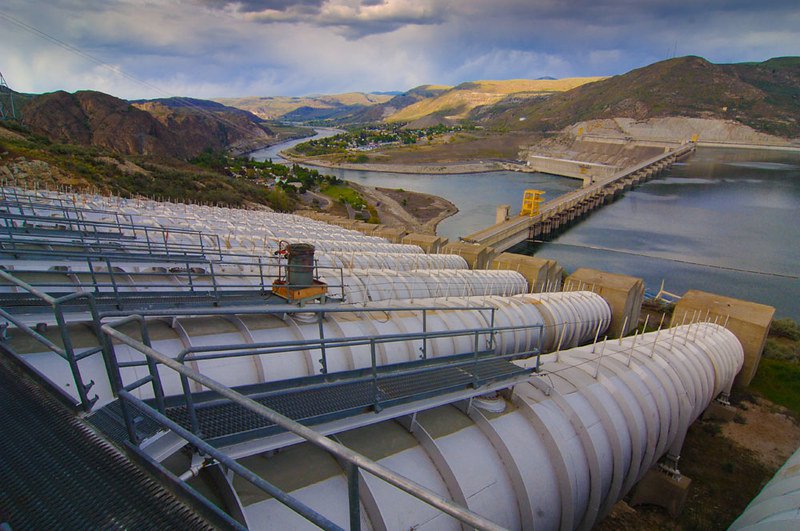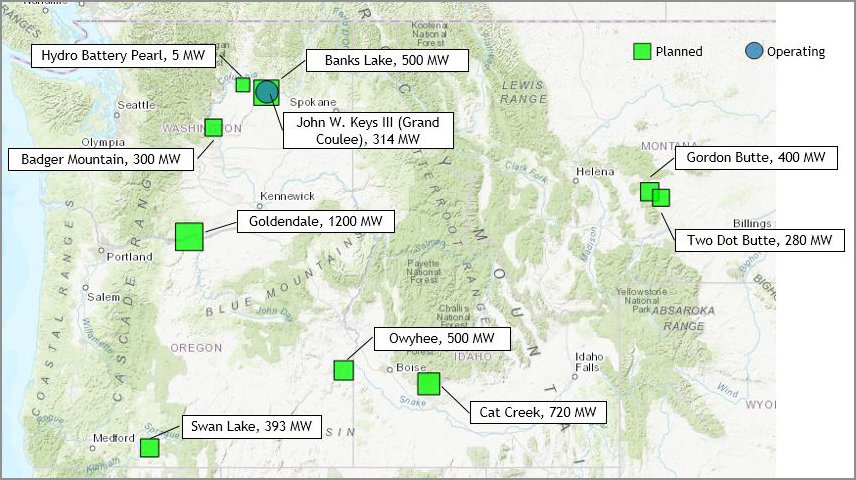Are Pumped Storage and Renewable Generation a Match?
The potential pairing of two carbon-free resources is creating buzz; the Council's power plan will road test the proposition
- December 12, 2019
- Carol Winkel

Pumped storage generation is having a moment. A number of utilities are considering the resource in their integrated resource plans and several projects have been proposed for development in the region. At its December meeting, power committee members were briefed on how the resource will be analyzed in the Council's regional power plan.
Pumped storage generates hydroelectricity for peak periods of demand by pumping water from a lower reservoir to a higher reservoir during low-demand periods and then releasing it during peak periods when electricity prices are higher.
The Council analyzes different resources as potential options for ensuring an adequate and affordable power supply. Gillian Charles, energy policy analyst, presented information on how staff will assess pumped storage generation by modeling its performance under different scenarios. The characteristics of pumped storage--expected costs, operating and performance specifications, and developmental potential--are inputs into modeling and comparing resources.
Noting that renewable development, combined with announced coal unit retirements and future compliance with clean energy standards, is driving the interest in pumped storage, Charles said that one of its key benefits is that, like hydropower dams, operators can adjust its generation to the grid's load variations, so it can complement renewable generation's ups and downs. This flexible capacity is a critical need as more renewable generation is added to the power grid.
The downside to pumped storage is that it is extremely expensive to build. A typical project costs about $2 billion and can take 10 years to license and build. It's a significant financial and regulatory risk should circumstances change down the road. One thing that could upend the calculation for pumped storage is the improving technology of batteries, which can also be paired with renewable resources, potentially making them a more cost-effective combination.
Still, developers have proposed nine projects in the region and two have Federal Energy Regulatory Commission permits: Swan Lake in Klamath County, Oregon and Gordon Butte in Meagher County, Montana. The only pumped storage project currently operating in the region is the 314 megawatt John W. Keyes III plant at Grand Coulee Dam.

"It's so capital-intensive; developers like to have their power purchase agreements signed before moving forward," observed Charles. "It will be interesting to see if we get one built in the next 10 years."



